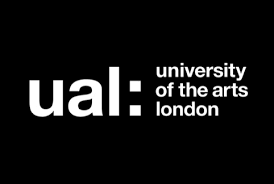Thinking about the best screen drama I saw in 2008, The Shooting of Thomas Hurndall was somewhere at the top of the list. Soon after I’d seen this I watched the much-hyped Clint Eastwood film, Changeling, also based on a true story. For me there was a yawning chasm in quality between the two. TSOTH was subtle, moving, avoided the clichés of the genre, and contained a couple of fantastically written (and performed) characterisations – the separated parents of the dead boy, played by Kerry Fox and Stephen Dillane.
This was factual drama at its best. Whereas Changeling reminded me of script meetings I’ve had where writers producers script editors have defended a credulous story event on the grounds that IT ACTUALLY HAPPENED as if that’s a clincher in any argument about drama. If it doesn’t work dramatically in the context of the story you’re crafting, factual accuracy is not a good reason for including or rehashing a ‘real event’. It reminds me there’s always an important distinction to be made between factual reality and what works dramatically. Just because something actually happened it doesn’t necessarily make it dramatically credible (strangely). It’s the old ‘truth being stranger than fiction’ adage.
In Changeling (a film about a mother’s search for her missing son) the whole story is predicated on the Angelina Jolie character agreeing to police and press to pose for photos with a boy whom she knows is not her son instead of saying – of course I won’t do that, he’s not my son. Now I imagine this actually happened and that these photos exist in some archive, and that the writer did their research and discovered this fact; but the way this scenario was set up was simply not believable. And in dramatic terms, it fatally undermined the credibility of the Jolie character at a very early stage of the story. From this moment she never really regained my empathy. The goodies were whiter than white, the baddies impossibly black – the whole thing felt simplistic and exaggerated.
Whereas in TSOTH, a film of subtlety and intelligence but also of real passion, one of the key images was the recurring motif of the last moment when Thomas’s mother saw him alive, when he left home, walking out of the front door of their middle class home to travel to Israel, against his mother’s will. This was not one of the big, set-piece moments of the story but a quiet, private moment that spoke volumes about the mother son relationship and was heart-breakingly sad. And it was the small, personal moments of contact between characters – particularly between the estranged parents, tragically brought back together by the most unwished for event – their shared suffering over the death of their child – that lifted the script to another level, ie. moments that were, I’m sure, imagined and created by Simon Block, the writer, not the big, documented, factual, public events of the story.
All this was reinforced for me by a very interesting article by Anne Billson in the Guardian Film section (23-1-09)-
http://www.guardian.co.uk/film/2009/jan/23/milk-sean-penn-real-people-performances
…about the dramatisation of true stories, very much along the same lines – how a writer, actor or director’s artistic interpretation of real events is often much more interesting and dramatically telling than a faithful recounting.
Philip Shelley
script-consultant.co.uk
Feb 2009






















